Creating a work breakdown structure (WBS) is a foundational step in project planning that involves breaking down a project into smaller, more manageable components. A WBS organizes the total scope of work into a hierarchical structure, starting with major deliverables at the top and dividing them into tasks and subtasks at lower levels. This approach helps project teams clearly define what needs to be done and ensures nothing is overlooked during execution.
Each level of a WBS provides more detail, making it easier to assign responsibilities, estimate costs and track progress. The top level represents the overall project, while lower levels identify work packages that can be scheduled, monitored and completed. By using a WBS, teams improve clarity, reduce confusion and build a strong foundation for successful project management.
While a work breakdown structure is essential for organizing tasks and deliverables, using project management software offers far greater flexibility, efficiency and oversight. A static WBS—often created in spreadsheets or diagrams—can’t provide real-time updates, track task dependencies or manage resource allocation. Project management software not only builds the WBS but connects it to live project data, allowing teams to monitor progress, adjust timelines and manage risks in one centralized platform. This dynamic environment keeps everything up to date and aligned as projects evolve.
ProjectManager is award-winning project and portfolio management software with Gantt charts that include a built-in work breakdown structure that makes task planning more intuitive and actionable. As you break down your project into phases and subtasks, the Gantt chart automatically displays them in a clear hierarchy with start dates, durations and dependencies.
This structure is easy to expand or adjust, and it integrates seamlessly with other tools like time tracking, resource management and dashboards. With everything connected, we turn your WBS into a fully interactive project plan that’s ready for execution and oversight. Get started with ProjectManager today for free.
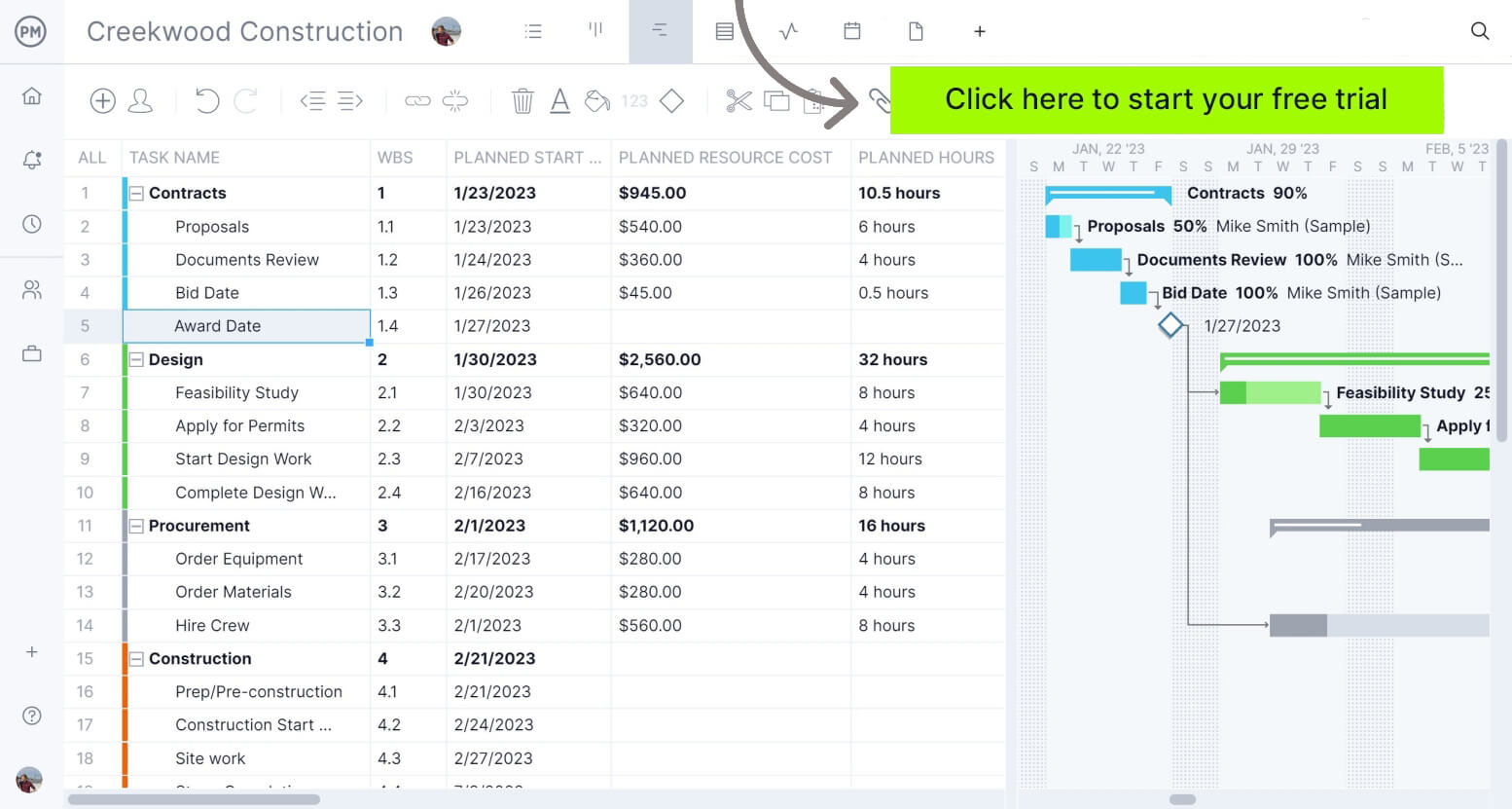
1. Define the Project Goals and Objectives
Before building a work breakdown structure (WBS), it’s essential to clearly define the project’s goals and objectives. These set the direction and purpose of the entire project and serve as the foundation on which every deliverable and task will be built. Goals are broad, overarching outcomes the project aims to achieve, while objectives are more specific, measurable actions that support those goals.
Establishing goals and objectives helps ensure that the WBS aligns with the overall project vision. Without clear direction, it’s easy for the WBS to become disorganized or overly complicated. Start by meeting with stakeholders, sponsors and team leads to document what the project must accomplish. These should guide your scope, budget, schedule and ultimately the structure of your WBS.
2. Write a Scope of Work Document
The scope of work (SOW) document outlines what is included and excluded in the project. It acts as a formal agreement between stakeholders and the project team, detailing deliverables, timelines, responsibilities and constraints. This document is critical when creating a WBS because it defines the boundaries for what the structure must account for.
By documenting the scope early, you reduce the risk of scope creep and ensure that every component in the WBS supports the agreed-upon objectives. The SOW helps maintain clarity as you begin to identify the key deliverables, making it easier to structure your breakdown efficiently and accurately.
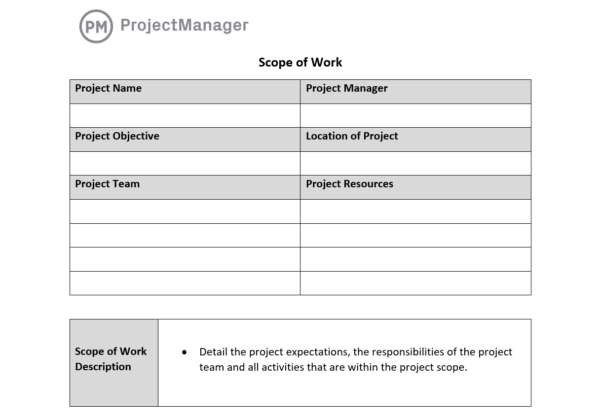
3. Identify the Major Deliverables
Once the goals and scope are in place, the next step in creating a WBS is to identify the major deliverables. These are the high-level outputs that the project must produce to be considered complete. Deliverables could be physical items, services or milestones depending on the nature of the project.
List each major deliverable and ensure they align with the goals and scope. For example, if you’re launching a website, major deliverables might include design, development, content and testing. These form the top level of your WBS hierarchy, from which all other breakdowns will stem.
4. Break Down Deliverables Into Sub-Deliverables
After identifying major deliverables, the next step is to break them down into smaller, more manageable sub-deliverables. Sub-deliverables are components that contribute directly to the completion of a major deliverable and are one level below in the WBS.
This breakdown helps clarify how the work will be executed and allows for better estimation of resources, time and cost. For example, under the “development” deliverable in a website project, sub-deliverables might include front-end development, back-end development and integration. Each of these is still a result or output rather than an action, keeping the WBS focused on deliverables rather than tasks.
5. Break Down Sub-Deliverables Into Work Packages
Sub-deliverables are further broken down into work packages, which represent the lowest level of the WBS. A work package is a task or group of tasks that can be assigned, scheduled and measured. It’s the point where the planning of cost, resources and duration occurs.
Work packages should be small enough to manage but large enough to produce a meaningful result. They become the actionable elements within your project plan. For example, “front-end development” might be broken down into “build homepage,” “build contact form” and “optimize mobile layout.” These are tangible, assignable units that project managers and team members can track.
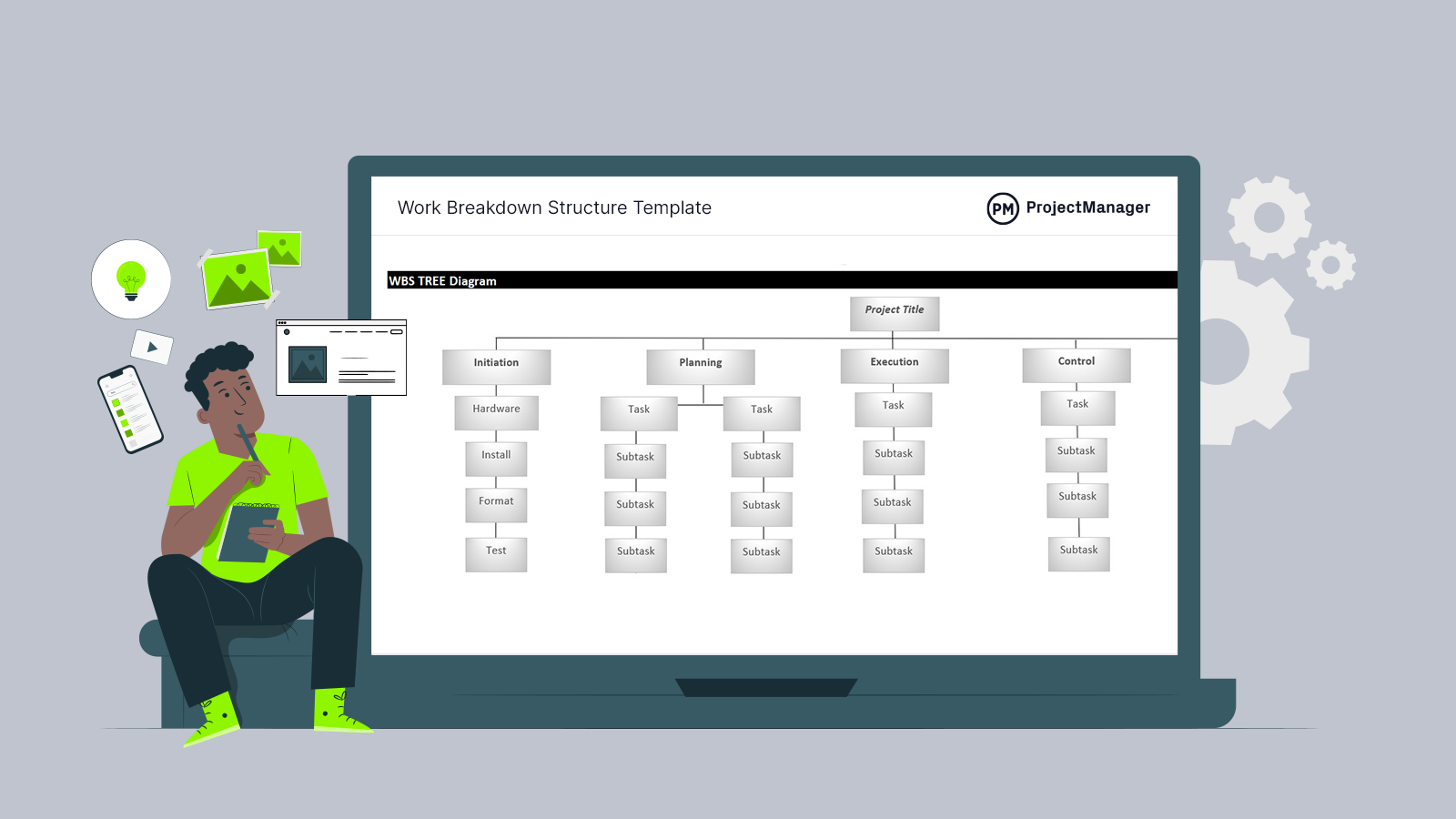
Get your free
Work Breakdown Structure Template
Use this free Work Breakdown Structure Template to manage your projects better.
Get the Template
6. Represent the Work Breakdown Structure
Once the WBS is fully developed—from deliverables to work packages—it needs to be presented in a format that supports understanding and use. There are three common formats for representing a WBS: hierarchical tree diagram, indented outline and tabular form.
Hierarchical Tree Diagram
This is the most visual form of WBS representation. A tree diagram displays the WBS in a cascading structure, with the overall project at the top and deliverables branching downward into sub-deliverables and work packages. It allows teams to see the big picture at a glance and understand how various components relate to one another.
Indented Outline
The indented outline is a text-based representation that uses indentation to show levels in the WBS. It resembles a traditional outline format with numbered levels such as 1.0, 1.1, 1.1.1, etc. This format is easy to build in a word processor or spreadsheet and is helpful for documentation or communication purposes.
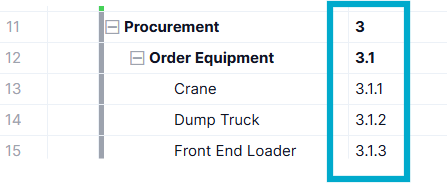
Tabular Form
In a tabular format, the WBS is presented in a table with columns for WBS ID, name, description and other relevant details. This format is ideal for integration with project management software or spreadsheets. It also makes it easier to filter, sort and track elements as the project progresses.
7. Create a WBS Dictionary
The WBS dictionary provides detailed information about each component in the WBS. It defines the scope, deliverables, responsible parties, costs, duration and assumptions for each work package. This document ensures that everyone involved in the project interprets the WBS the same way.
Without a WBS dictionary, different stakeholders may make assumptions about what specific components mean, leading to miscommunication and rework. The dictionary complements the WBS by providing context and clarity at every level of the breakdown.
Work Breakdown Structure Template
Download this free work breakdown structure template to simplify the process and ensure consistency across projects. A good template will include fields for each level of the breakdown—project, deliverables, sub-deliverables and work packages—along with columns for IDs, descriptions, owners and status.
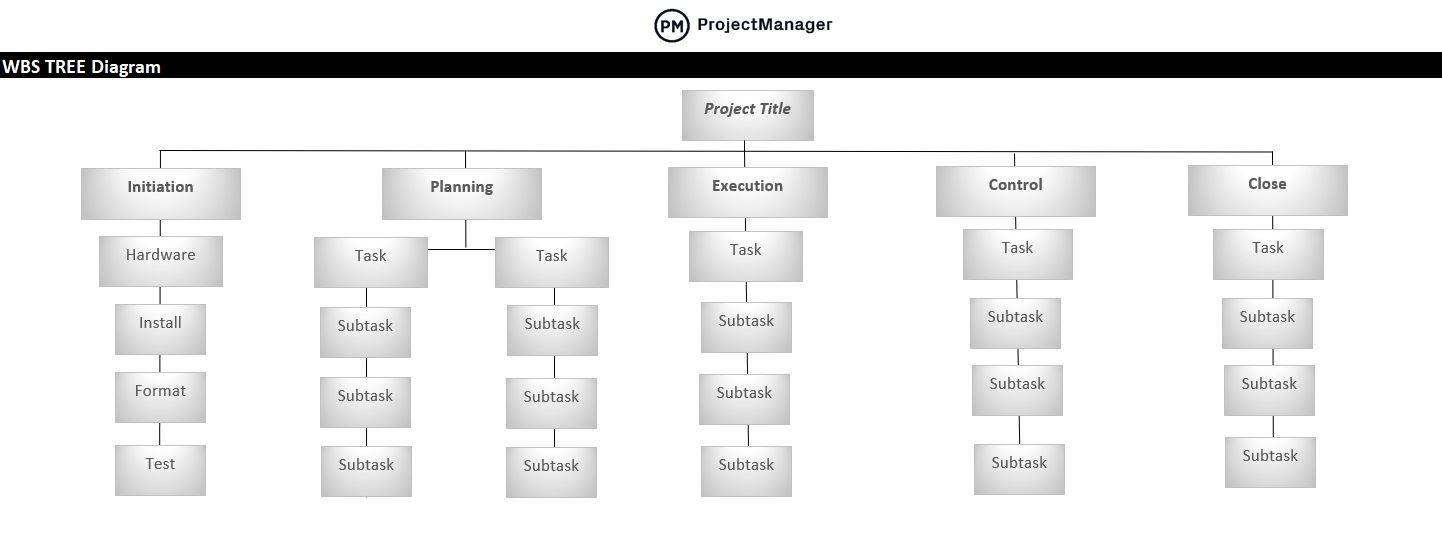
Templates can be used in Excel, Word or project management software like ProjectManager, which allows users to create dynamic, interactive WBS charts that connect with task lists, timelines and dashboards. A reusable template also speeds up planning and reduces the chance of overlooking key components.
Best Practices for Creating a WBS
To build an effective and manageable WBS, it’s important to follow some proven best practices. These principles help keep your structure focused, functional and easy to use throughout the project lifecycle.
100% Rule
The 100% Rule is the foundation of WBS design. It states that the WBS must capture 100% of the project scope—including all deliverables, sub-deliverables and work packages—without overlap. Each level of the WBS should fully represent the scope of the parent level above it. This ensures completeness and prevents scope gaps or duplication.
Don’t Over-Decompose
While it’s important to break down work into manageable parts, going too far can lead to unnecessary complexity. Avoid breaking down work packages into overly small tasks unless necessary. Doing so may make the WBS harder to maintain and manage, and it can shift the focus from outcomes to micro-tasks that should be handled during scheduling, not planning.
A WBS Is About Deliverables, Not Tasks
A common mistake is to treat the WBS as a task list. However, the WBS should focus on what the project will deliver, not how it will be done. Tasks such as “write code” or “conduct meeting” are execution activities, not deliverables. Instead, focus on outcomes like “completed prototype” or “approved design document” to keep the WBS properly structured.
Involve Team Members in the Process
Collaborating with your team when creating the WBS leads to better accuracy, buy-in and understanding. Team members often have insights into what’s required to complete deliverables and can help identify components that might be missed. Involving them early in the planning process also encourages ownership and accountability for the work packages they help define.

How to Create a Work Breakdown Structure with ProjectManager
Creating a work breakdown structure (WBS) in ProjectManager starts with launching a new project and accessing the Gantt chart view. This view is ideal for outlining your WBS because it allows you to organize work hierarchically. Begin by entering your major deliverables as parent tasks, then break them down into sub-deliverables and work packages using the indent function. The intuitive drag-and-drop interface makes it easy to restructure as needed, and each task can be enriched with details like start and end dates, durations and assigned team members—turning your WBS into a dynamic project blueprint.
Gantt Syncs With Multiple Project Views
Once the structure is in place, you can enhance it with dependencies and milestones to show how tasks are related and when major checkpoints occur. ProjectManager keeps all views—Gantt chart, task list, kanban board and calendar—in sync, so your team can work in the format they prefer without disrupting the overall structure. This flexibility keeps the WBS organized while supporting team collaboration and clear communication.
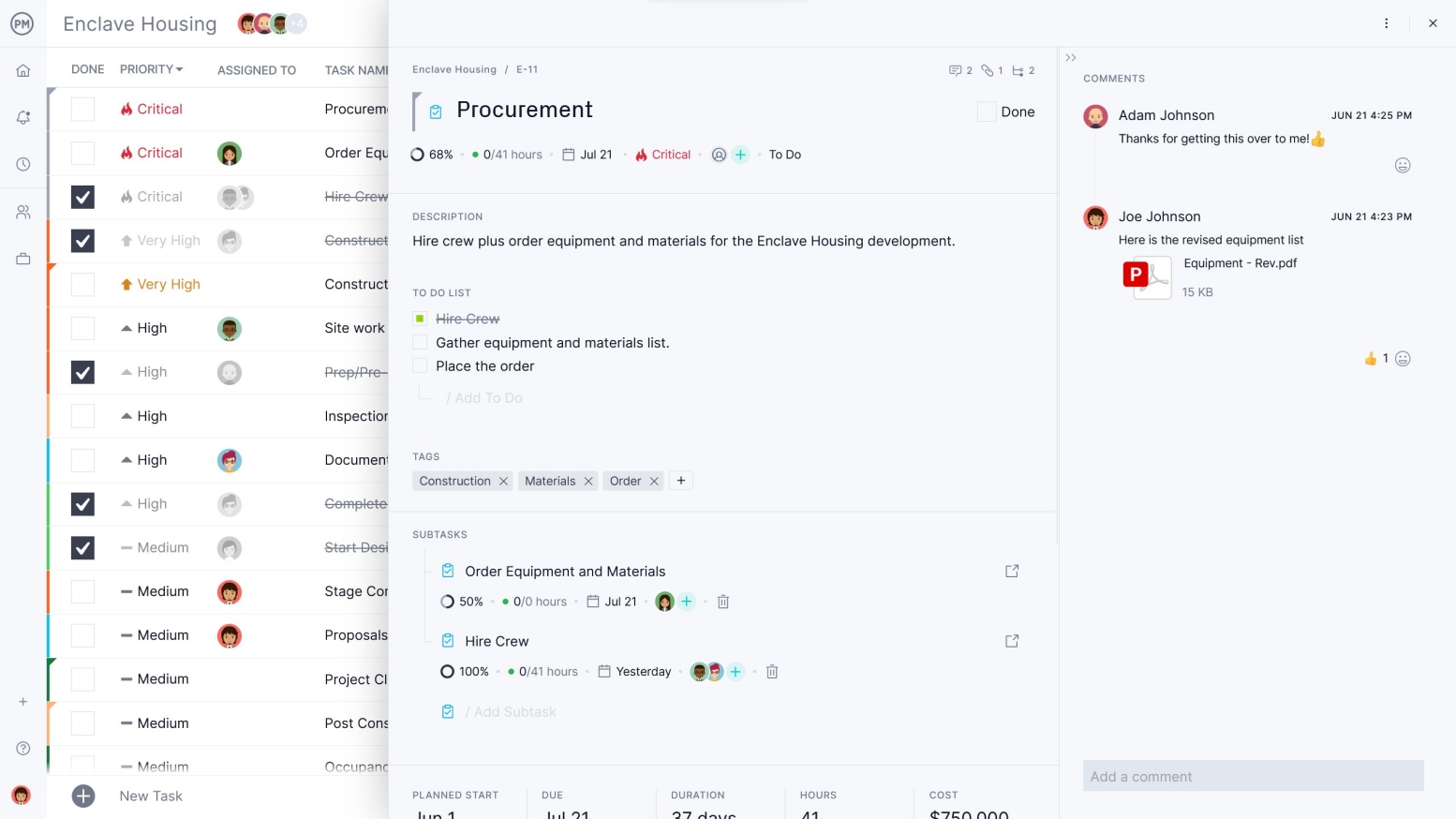
Track Progress With Real-Time Dashboards and Reports
As the project progresses, your WBS becomes more than a plan—it transforms into a real-time management tool. ProjectManager’s dashboards and reports give project sponsors and managers instant insight into work package status, resource use and overall performance. When tasks are updated or timelines shift, those changes reflect immediately across the platform. This live connection between planning and execution ensures your WBS stays accurate, actionable and aligned with project goals.
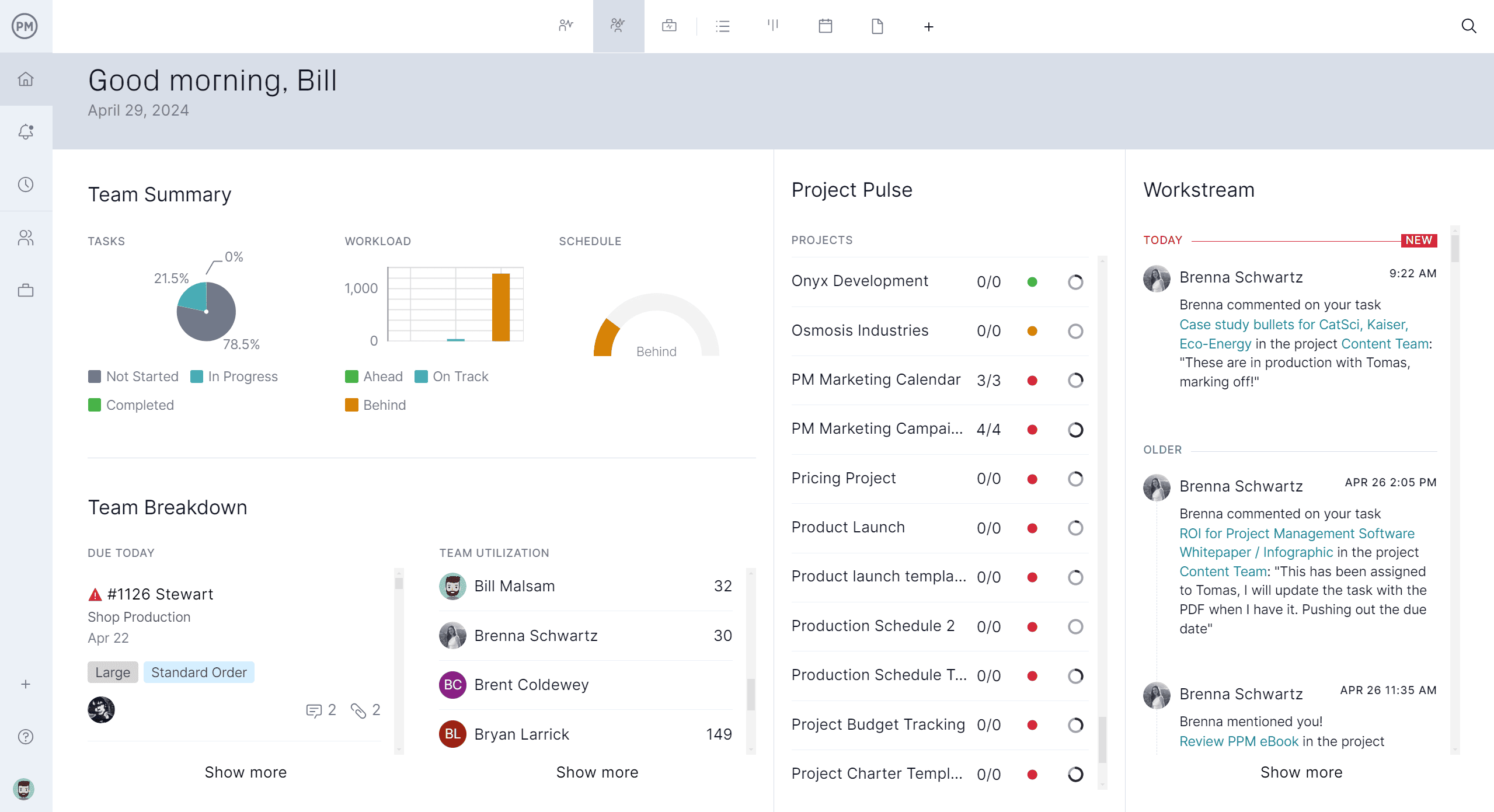
Related Work Breakdown Structure Content
How to create a work breakdown structure is only the beginning. For those who want to continue to learn about WBS, here are some links to recently published stories.
- Best Work Management Software of 2025 for Remote Teams
- What Is a Work Plan? How to Make a Work Plan In 7 Steps
- What Is a Statement of Work? Definition & Examples
- 9 Work Templates for Excel and Word
ProjectManager is online project and portfolio management software that connects teams whether they’re in the office or out in the field. They can share files, comment at the task level and stay updated with email and in-app notifications. Join teams at Avis, Nestle and Siemens who are using our software to deliver successful projects. Get started with ProjectManager today for free.

